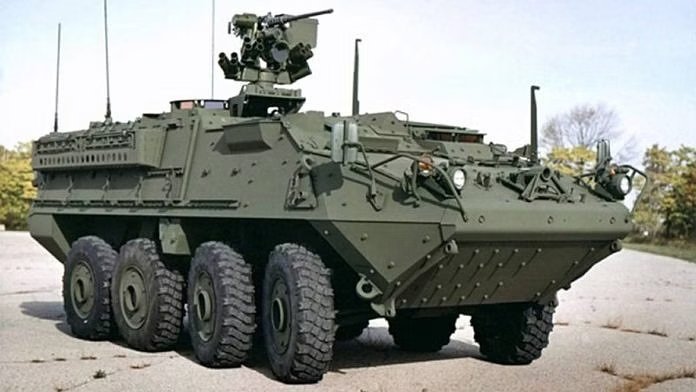New Delhi: The Indian Army is looking to procure about 530 infantry combat vehicles (ICVs) and soon it will initiate the trials of the US-made Stryker armoured infantry combat vehicles in both deserts and high-altitude Ladakh. Last year, as part of the US-India Initiative on Critical and Emerging Technologies (iCET), the two countries had decided on the Stryker — the eight-wheel-drive combat vehicle developed by General Dynamics Land Systems — as one of the joint-production technologies to be pursued.
According to the sources, the talks between India and the US are at an advanced stage and the project had come up for discussion last month between visiting US National Security Adviser Jake Sullivan and NSA Ajit Doval. The Stryker is under consideration, the sources added, because Indian vendors are unable to meet the qualitative requirements (QR). The Stryker too has its limitations.
The procurement of new ICVs by the Indian Army is for replacing the Russian-origin BMP-2 vehicles in use with the mechanised infantry. There are a total of 50 mechanised infantry battalions in the Army. Of these, while 10 are dedicated to recce and support, the other 40 are standard mechanised infantry battalions.
The Indian Army is seeking to re-equip 10 battalions with the new ICVs. Among the recce and support battalions, five were to be equipped with wheeled vehicles and five with tracked ones. On the other hand, among the standard mechanised infantry battalions, about 30 are tracked and approximately 10 were meant to be wheeled. However, because there are wheeled vehicles, all used the BMPs which are tracked.
The Request for Proposal (RFP) issued by the Indian Army, over a decade and a half ago, received responses from 15 vendors but none could meet the requirements fully. In case India zeroes in on the Strykers, there will be limited off-the-shelf purchase under the US’s foreign military sales (FMS) initiative. It will then be followed by joint production in India by means of a joint venture. This will also help India configure the vehicles in accordance with its requirements.
Sources said that in case the Stryker vehicle is finalised, its capabilities will have to be altered to suit high-altitude areas such as eastern Ladakh, where tensions along the Line of Actual Control have been ongoing between India and China for the past four years. One major drawback of the Stryker is that it’s not an amphibious vehicle. Each vehicle will have to be terrain- and weather- specific, add another source.
The decision will be taken progressively after a “holistic analysis”, which will include an evaluation of the technical capabilities such as mobility, terrain negotiation in various conditions, protection to troops as well as lethality parameters, according to the sources. One of India’s conditions is co-development of Stryker with an infused Indian defence ecosystem. India is also looking at the transfer of critical technologies like the Javelin anti-tank guided missiles (ATGMs) that are integrated with the Stryker.
The wheeled armoured platforms (WhAP) developed by Tata and the Defence Research and Development Organisation (DRDO) serve different purposes, sources said and explained that the WhAP cannot be compared to ICVs. They claimed that the product does not offer firepower, a sight system or even a fire-control system. However, it should be noted that the WhAP with several versions has showcased its capabilities with multiple turrets, sight system and a fire control system.
Also looking to procure 105 wheeled armoured personnel carriers (APCs) for recce and support, the Army is currently formulating Request for Information (RFI) for APCs.





